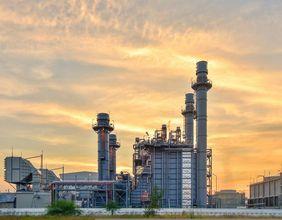Highlights
US airstrikes on Iran raise tensions, leading to early oil price surge
Brent crude temporarily spikes before easing, impacting global markets
Energy majors LON:SHEL and LON:BP. show gains on FTSE 100
Energy stocks on the FTSE 100 opened the week with a strong start following heightened geopolitical developments involving the United States and Iran. Notably, (LON:SHEL) and (LON:BP). rose in early trading as crude prices surged during Asian market hours. The increase in energy prices came after reports of targeted strikes by the US aimed at disrupting Iran’s nuclear capabilities.
Despite the initial jump, Brent crude prices eventually stabilised below earlier peaks. This modest correction did little to dampen early gains for energy companies, as sentiment was influenced by concerns over regional instability and energy supply disruptions.
Commodity Markets Show Mixed Reaction
Crude oil’s initial rally saw it touch levels not observed since early in the year, though it soon retreated. Traders and markets assessed the durability of the spike, factoring in possible retaliatory actions from Iran. Meanwhile, the gold market remained relatively unchanged, offering limited safe-haven movement. The US dollar showed slight upward movement, while bond yields ticked higher due to softening demand in treasuries.
The muted response from broader financial markets highlights a wait-and-see approach. With energy corridors in the region still open, markets have not yet priced in a sustained disruption. The Strait of Hormuz remains a critical focal point for any prolonged supply impact, given its importance in global oil transport.
Middle East Risks Add Inflation Pressure to European Outlook
Macroeconomic commentary pointed to the broader impact of energy price changes, particularly in Europe. The region faces upward pressure on consumer price metrics should oil prices remain elevated. While the US market may be somewhat insulated due to its domestic production base, Europe’s exposure to imported energy makes it more susceptible to inflationary consequences.
Rising energy prices could also challenge economic growth across the FTSE 350, with potential slowdowns in consumer spending and industrial output. If the cost of crude remains high, downstream sectors such as transportation, logistics, and manufacturing could feel the strain.
Strategic Implications for Energy Infrastructure
While no direct disruption has been reported, concerns are growing about the strategic vulnerability of energy facilities across the Middle East. Aside from the Strait of Hormuz, other installations remain potential flashpoints. Market attention is centred on the nature of Iran’s expected response, with official statements from Tehran providing little clarity.
Statements from US officials have framed the airstrikes as limited and focused, though commentary from political figures has raised uncertainty. Any escalatory move targeting oil production or export infrastructure in the region would likely change the landscape for energy prices and, by extension, market sentiment across indices including the FTSE.
Energy Giants LON:SHEL and LON:BP. Post Gains
Amid these developments, LON:SHEL and LON:BP. saw upward momentum in the early session, reflecting their sensitivity to crude market movements. Both stocks are widely followed on the FTSE 100, and their performance often mirrors fluctuations in global energy dynamics.
These companies have historically maintained steady returns through oil price volatility and are also frequently tracked through metrics such as the FTSE Dividend Yield due to consistent shareholder distributions.
As markets continue to digest geopolitical updates, the outlook for the broader energy sector remains heavily influenced by strategic developments in the Middle East and the policy stance adopted by key global actors.





